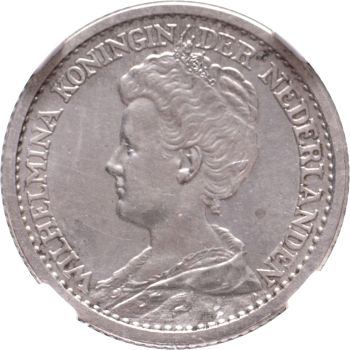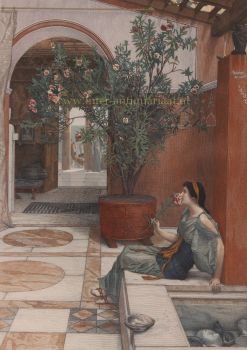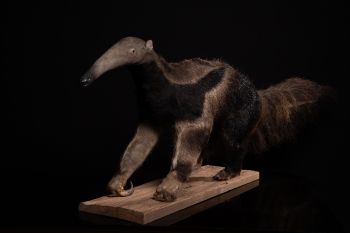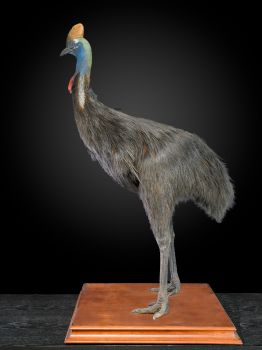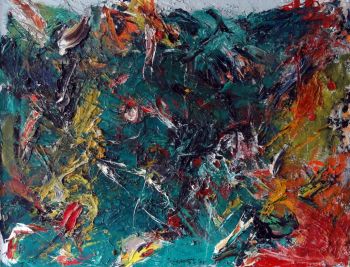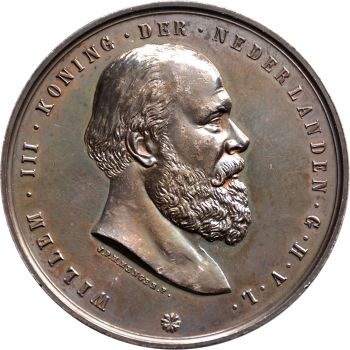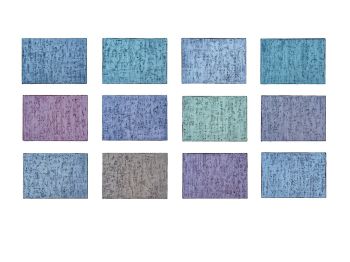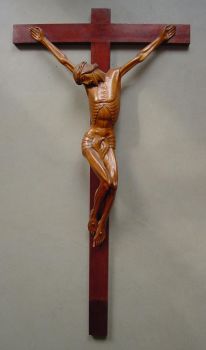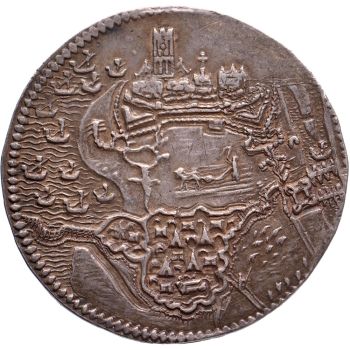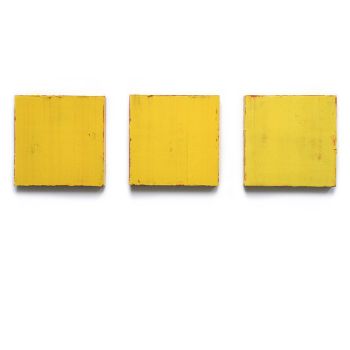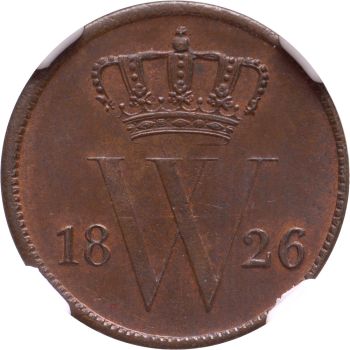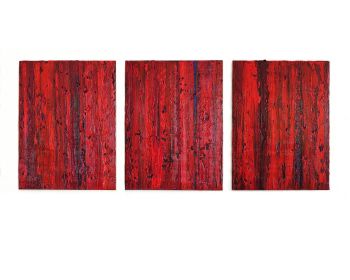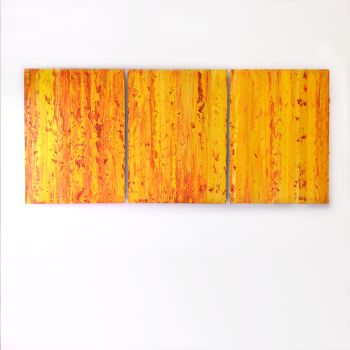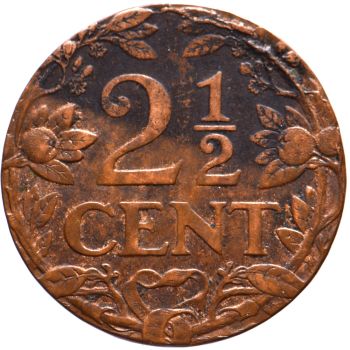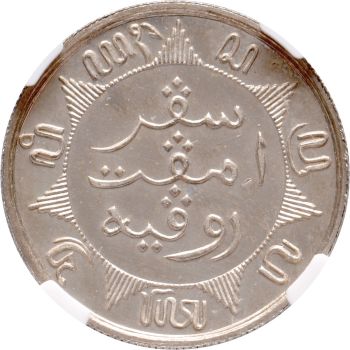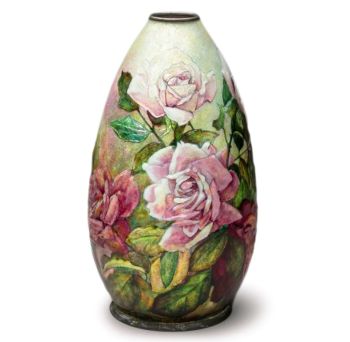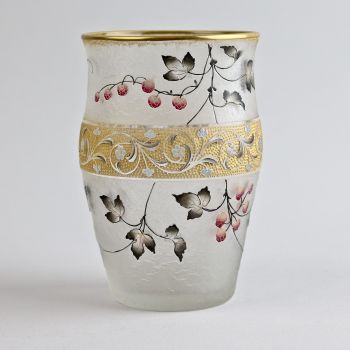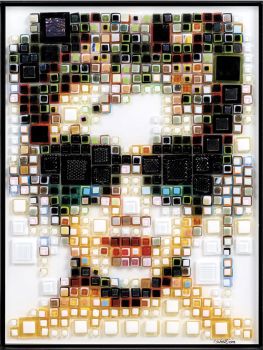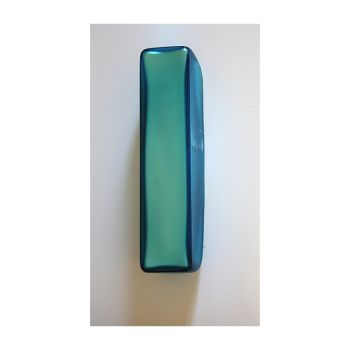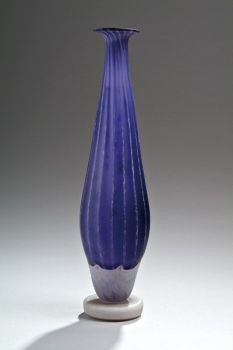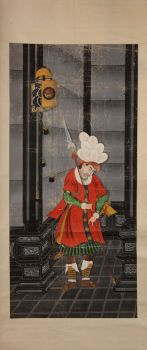AN EXCEPTIONAL AND EXTREMELY RARE VICTORIAN GILT-WOOD FIRE SCREEN WITH TAXIDERMY HUMMINGBIRDS 1875
Artiste Inconnu
Verre
130 ⨯ 140 cm
Prix sur demande
Zebregs & Röell - Fine Art - Antiques
- Sur l'oeuvre d'artAN EXCEPTIONAL AND EXTREMELY RARE VICTORIAN GILT-WOOD FIRE SCREEN WITH TAXIDERMY HUMMINGBIRDS BY AND LABELLED FOR HENRY WARD (1812-1878)
England, third quarter 19th century
On two scrolling foliate feet with casters, above which a rectangular two-side glazed frame, with on top a two-sided shield with initials crowned by a royal coronet on a pillow, the vividly colored hummingbirds, amongst which Anna’s hummingbird (Calypte anna), Lucifer hummingbird (Calothorax lucifer), Ruby-throated hummingbirds (Archilochus colubris), Bumble-bee hummingbirds (Atthis heloisa), Sword-billed hummingbird (Ensifera ensifera), Little hermits (Phaethornis longuemareus), Woodnymphs (Thalurania), the Marvellous spatuletail (Loddigesia mirabilis) and many others, perched, highly naturalistic, on branches with nests sprouting from the foliate bottom.
H. 130 x W. 140 cm
Provenance:
Noble collection, United Kingdom
Note:
This fire screen, that was placed in front of the fireplace when the fire was out, can be regarded as one of the most important pieces of Victorian taxidermy, and quite probably one of the pinnacles of Henry Ward’s oeuvre, still in private hands today. What makes it even more special is the iridescence of feathers of the ‘gems of the jungle’ still present, which means this screen has been preserved well, for colours of feathers often fade in daylight.
Henry Ward is the founding father of the Ward lineage, that started the privately-owned taxidermy hype in Victorian England. As a young man, Henry Ward (1812-78) was employed as a taxidermist by the legendary American naturalist and bird painter John Audubon, whom he accompanied on several of his expeditions. They probably met whilst the latter was visiting England in 1931 and returned to America together. How long Ward remained in America is not known, but he is listed in trade directories as a taxidermist at his London address (2, Vere Street) from 1857 until his death in 1878. His most common trade label is very small and is situated inside his cases. The 'late Williams' refers to the fact that Ward worked for T.M.Williams of Oxford Street. He is described on one label as the 'chief artist in taxidermy to the late T. M. Williams'. Ward did not take over Williams' premises. Cases bearing Henry Ward's own label, were probably produced between 1857 and 1878. Rowland Ward tells us that he derived considerable profit from his father's knowledge and experience during the ten years he worked with him. At the time of his death, Henry Ward was still at 2, Vere Street, although by then he also owned 5, Vere Street. - Sur l'artiste
Il peut arriver qu'un artiste ou un créateur soit inconnu.
Certaines œuvres ne doivent pas être déterminées par qui elles sont faites ou elles sont faites par (un groupe d') artisans. Les exemples sont des statues de l'Antiquité, des meubles, des miroirs ou des signatures qui ne sont pas claires ou lisibles, mais aussi certaines œuvres ne sont pas signées du tout.
Vous pouvez également trouver la description suivante :
•"Attribué à …." A leur avis probablement une oeuvre de l'artiste, au moins en partie
•« Atelier de …. ou « Atelier de » À leur avis, une œuvre exécutée dans l'atelier ou l'atelier de l'artiste, éventuellement sous sa direction
•« Cercle de… ». A leur avis une oeuvre de la période de l'artiste témoignant de son influence, étroitement associée à l'artiste mais pas forcément son élève
•« Style de … ». ou "Suiveur de ...." Selon eux, une œuvre exécutée dans le style de l'artiste mais pas nécessairement par un élève ; peut être contemporain ou presque contemporain
•« Manière de… ». A leur avis une oeuvre dans le style de l'artiste mais d'une date plus tardive
•"Après …." A leur avis une copie (quelle qu'en soit la date) d'une oeuvre de l'artiste
•« Signé… », « Daté… ». ou « Inscrit » À leur avis, l'œuvre a été signée/datée/inscrite par l'artiste. L'ajout d'un point d'interrogation indique un élément de doute
• "Avec signature ….", "Avec date ….", "Avec inscription …." ou "Porte signature/date/inscription" à leur avis la signature/date/inscription a été ajoutée par quelqu'un d'autre que l'artiste
Êtes-vous intéressé par l'achat de cette oeuvre?
Artwork details
Related artworks
- 1 - 4 / 12
- 1 - 4 / 24
- 1 - 4 / 24
Artiste Inconnu
Verre à boire Cristallo façon de Venise1600 - 1650
Prix sur demandePeter Korf de Gidts - Antiquairs
1 - 4 / 24Paulus Franciscus Kromjong
Fleurs devant Arearea Aka (joie) par Gauguin '20th century
Prix sur demandeZebregs & Röell - Fine Art - Antiques
Shiba Kokan
Peinture d'un hollandais fantastiqueearly 19th
Prix sur demandeZebregs & Röell - Fine Art - Antiques
Artiste Inconnu
The bell of the VOC fortress in Jaffna, Sri Lanka1747
Prix sur demandeZebregs & Röell - Fine Art - Antiques
 Sélectionné par
Sélectionné parDanny Bree
1 - 4 / 12












